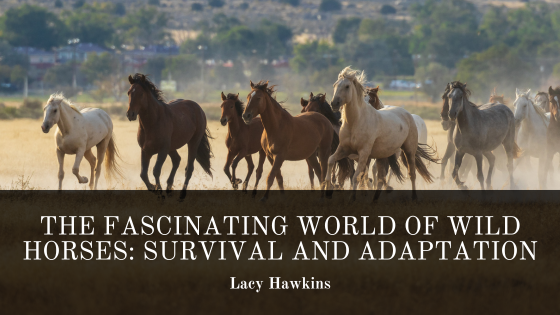Imagine a world where the thundering hooves of majestic creatures echo through open grasslands, a world where the survival saga of wild horses unfolds. These captivating beings, members of the Equidae family, include the iconic Przewalski’s horse, representing the only “wild” subspecies alive today. Their story is one of resilience, adaptation, and a remarkable journey from the brink of extinction to a hopeful resurgence.
Wild horses, including the Przewalski’s horse, share a lineage with domestic horses, zebras, and donkeys. Originating in North America around 4 million years ago, they later migrated to Eurasia, making their mark on the world. The last prehistoric North American horses bid farewell between 13,000 and 11,000 years ago, but Equus, the genus to which they belong, had already ventured into Asia, Europe, and Africa.
Fast forward to today, where we encounter the intriguing tale of the Przewalski’s horse, once declared extinct in the wild. Human activities drove them to the edge in the 1960s, leading to their listing as Extinct in the Wild by the International Union for Conservation of Nature (IUCN). However, conservation efforts, meticulous zoo breeding programs, and a careful selection of genetically distinct individuals paved the way for a remarkable comeback.
One unexpected habitat for these resilient horses is the Chernobyl Exclusion Zone. Despite the challenges posed by poachers, the horses exhibited high reproductive success in an area untouched by human interference. This unique occurrence emphasizes the adaptability of these creatures even in unconventional environments.
When it comes to family dynamics, Przewalski’s horses live in small family groups, with a stallion, several mares, and their foals forming tight-knit herds. The herds exemplify the importance of familial bonds and provide a glimpse into the intricate social lives of these remarkable creatures.
Today, Przewalski’s horses roam only in a few small regions of Mongolia, primarily in the Altai Mountains and protected reserves. Their diet, typical of herbivores, includes a variety of plants like sedges, grasses, and legumes, showcasing their ability to adapt to different vegetation.
The journey of wild horses, from the edge of extinction to thriving in carefully managed reserves, highlights the delicate balance between human intervention and nature’s resilience. As these creatures continue to graze the landscapes of their native habitats, their survival story serves as a testament to the importance of conservation efforts and the extraordinary adaptability of life in the wild.
